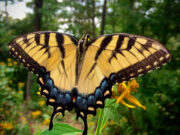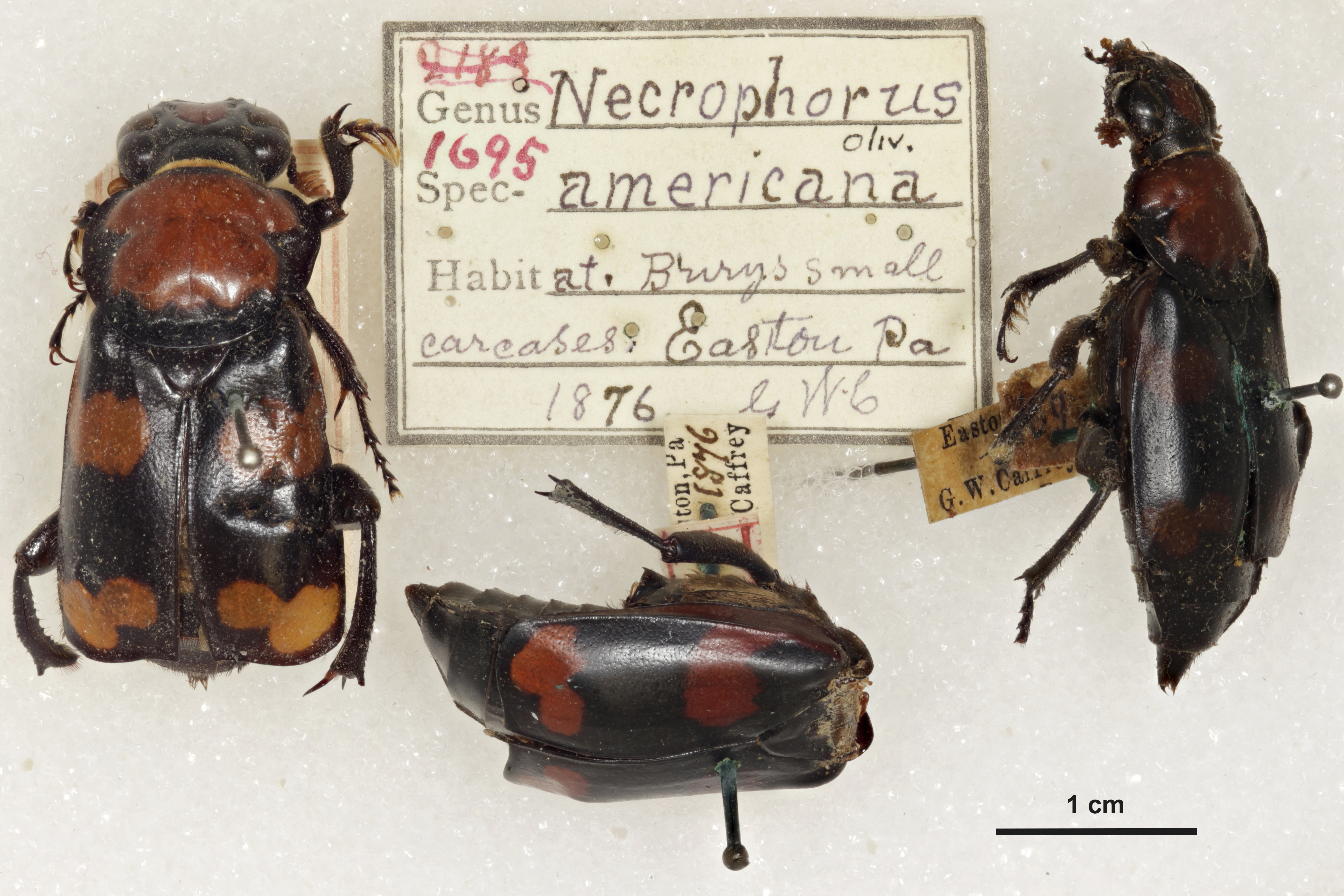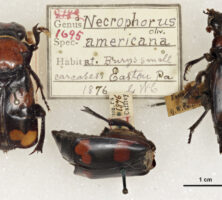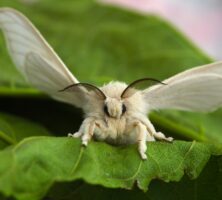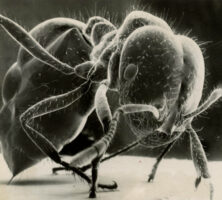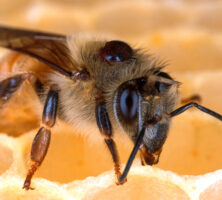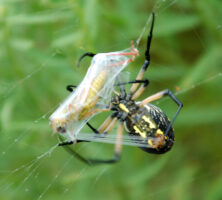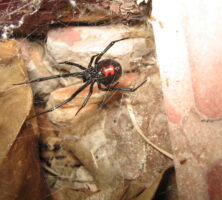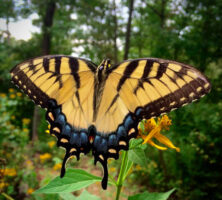Insects and spiders are invertebrates that belong to the phylum Arthropoda, which also includes such animals as millipedes, lobsters, and crabs. The arthropods represent both the largest number of species on Earth (approximately four-fifths of all known living species) and the largest number of individual organisms. Like all other arthropods, insects and spiders are characterized by segmentations, chitin exoskeletons, and appendages. Insects and spiders are crucial contributors to their local environments, and they affect agricultural efforts wherever food and fiber are grown.
Differences between Insects and Spiders
Multiple physical and behavioral differences separate spiders from insects. Spiders likely have a shared ancestry with marine arthropods, like horseshoe crabs and sea spiders, rather than a direct link with terrestrial insect species. Though both spiders and insects have exoskeletons, insects have a three-part body (consisting of the head, thorax, and abdomen) with six legs, which are organized in three pairs on each side of the body. In contrast, spiders have two-part bodies, which lack visible segmentation, and four pairs of legs. Insects often use one pair of sensory antennae to perceive information in their environments, whereas spiders generally rely on hairs, bristles, spines, and scales on their legs for sensory functions. Finally, insect species support a repertoire of specialized mouthparts, while spiders have simpler mouth structures.
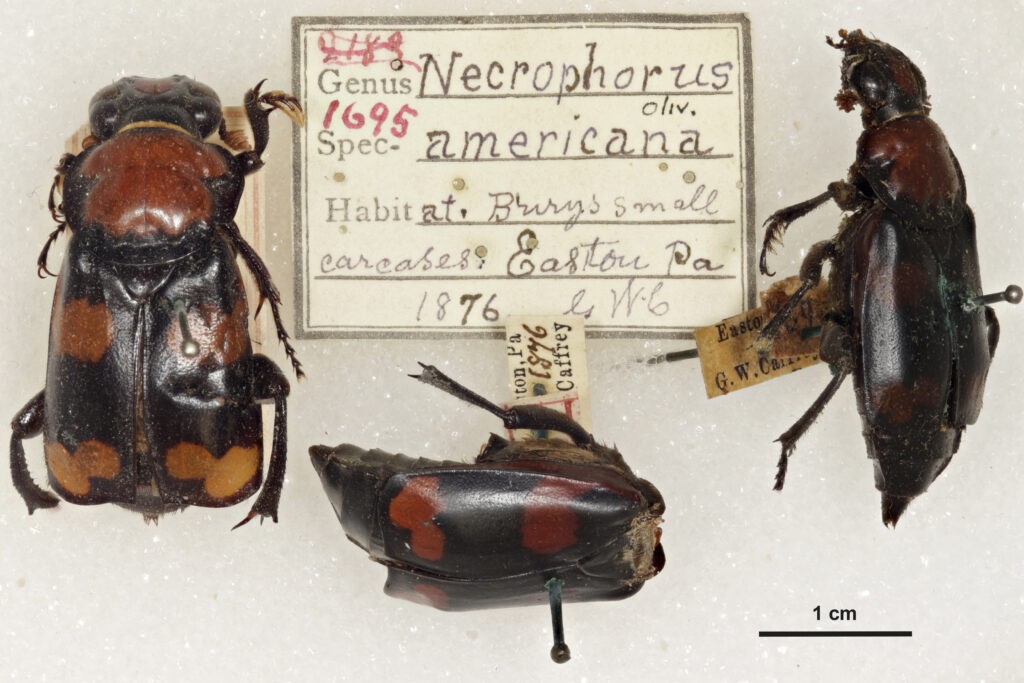
Photograph by the Frost Museum
In general, spiders are unique for their ability to create silk with organs called “spinnerets,” which are located on the abdomen. Most spider species use silk to make webs for capture or reproduction; to build dragline structures, or the outer frames of webs; and to build structures for use in “ballooning” through the air. While many insects also have the ability to produce silk, they use glands located in the mouth rather than spinnerets. For insects, the majority of silk production occurs during the larval stage. Silk textiles have been produced by the mulberry silkworm, the caterpillar of the domesticated silkmoth, Bombyx mori, for millennia. (Eighteenth-century Georgia colonists were unsuccessful in establishing a silk industry in Savannah.)
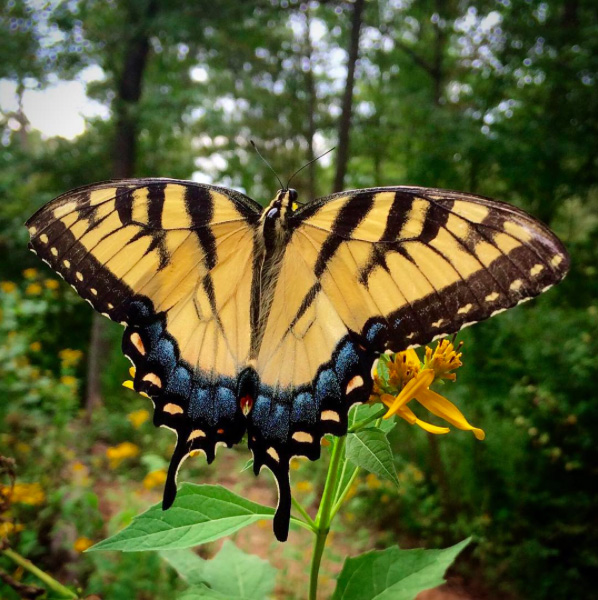
Courtesy of Loy Xingwen
Dietary preferences also vary between the two groups. Spiders are exclusively carnivorous, eating insects, other spiders, and sometimes small invertebrates and vertebrates. In contrast, insects eat a variety of foods including all types of vegetation, minerals in dirt, other insects and arthropods, and small invertebrates and vertebrates. Spiders molt like most insects but do not undergo metamorphosis. In contrast, some insect species undergo the larval and pupal stages of metamorphosis, while others do not.
Insects
Insects, which belong to the class Insecta, represent more than 850,000 identified species, with as many as 30 million more species of insects yet to be discovered or properly described. Scientists estimate that there are more kinds of insects living on Earth than all the other animal species combined. While no one knows for sure how many insect species live in Georgia, approximately 91,000 species have been identified to date in the United States. In addition to Georgia’s thousands of native insect species, the state is home to a number of invasive species that can affect natural resources, human health, agricultural production, and the economy. A wide array of insects, from dragonflies and beetles to butterflies and mosquitos, live in Georgia, and some insects are better known than others.
Ants (order Hymenoptera; family Formicidae) are eusocial, or act with strict hierarchies of labor. Other insects in the order Hymenoptera, including wasps and bees, have strict social structures as well. In Georgia, fire ants are a concern for many homeowners and farmers because of the insects’ venomous sting. The tropical fire ant (Solenopsis geminata) and the southern fire ant (Solenopsis xyloni) are established species in the state but are often overshadowed by Solenopsis invicta, an invasive species from South America. The foreign species has threatened soybean production and interbred with native ants to create hybrid species of fire ants.
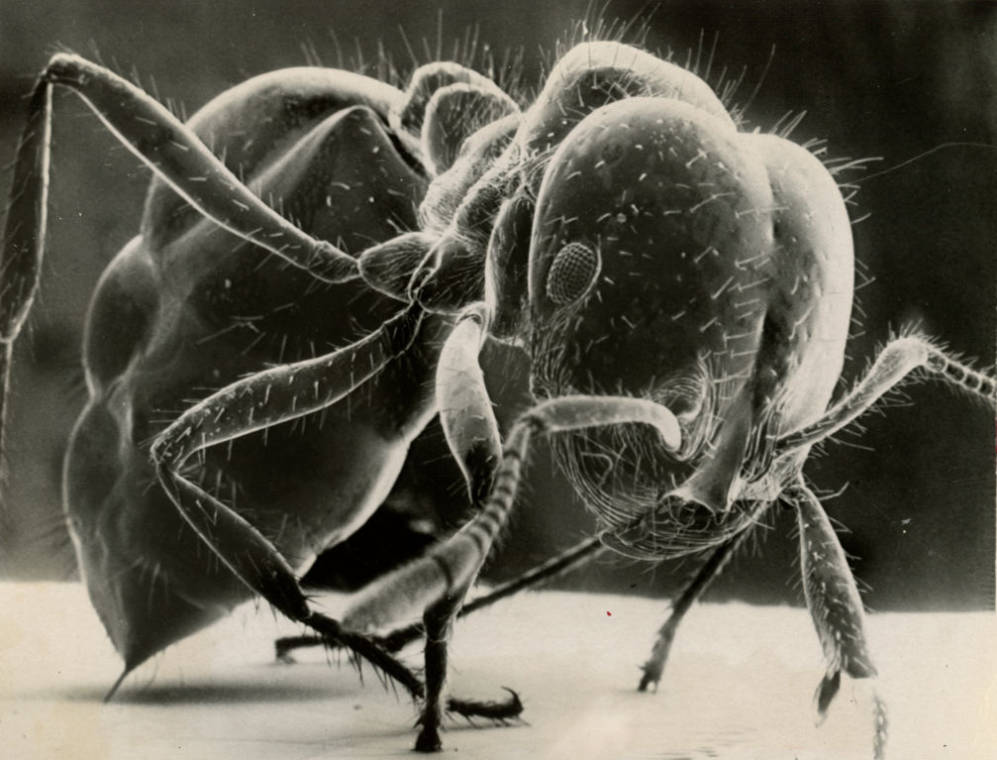
Courtesy of Atlanta Journal-Constitution.
The European honeybee (Apis mellifera) is not native to Georgia, but records show that it had arrived in the state by 1743. In 1975 it was named the state insect in recognition of its value as an agricultural tool for pollinating flowers and crops. Honeybees help pollinate several types of crops, including blueberries, apples, melons, and gourds, such as pumpkins and squash. The bees also create honey, another valuable product sold by beekeepers and farmers. Researchers attribute recent declines in apiary honeybee populations to a variety of problems, including a phenomenon known as colony collapse disorder (CCD), parasitic varroa mites (Varroa destructor), foulbrood disease, and certain hive-scavenging beetles. In addition to the now naturalized European honeybee, native groups of bumblebees (genus Bombus), carpenter bees (subfamily Xylocopinae), and sweat bees (family Halictidae) are common throughout the state. These native bees are also natural pollinators and are experiencing population problems similar to those of honeybees.
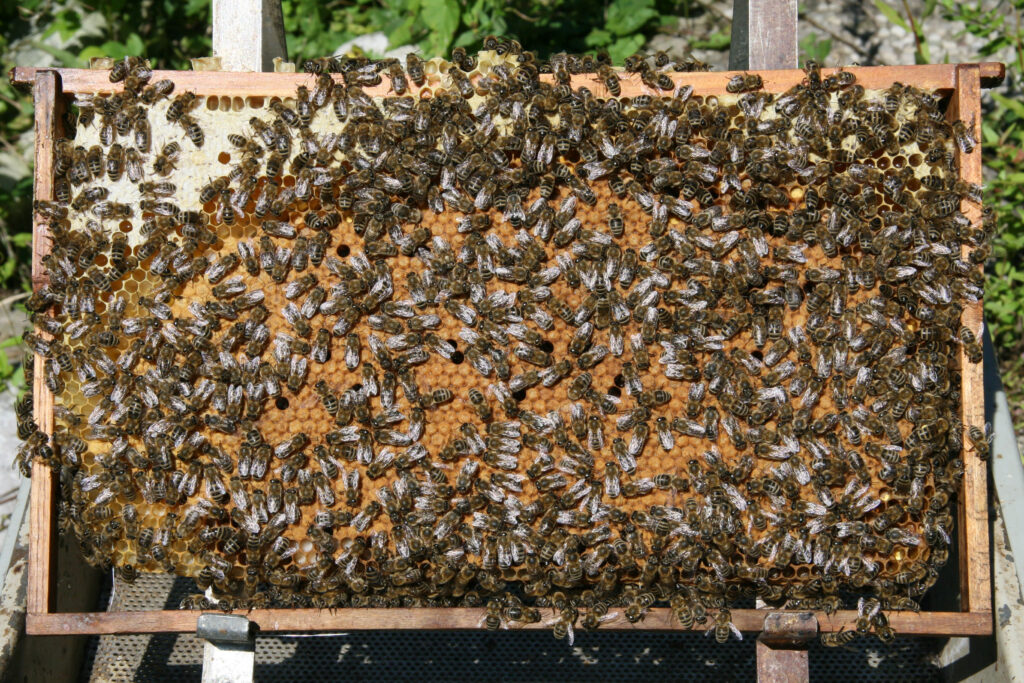
Photograph by Waugsberg
Beetles (order Coleoptera) represent the largest group of insects and are efficient nutrient recyclers and pollinators. Thousands of beetle species, both native and invasive, thrive in Georgia, including tiger beetles (subfamily Cicindelinae), known for their predatory habits; the southern pine beetle (Dendroctonus frontalis); and weevils (superfamily Curculionoidea), which are know for their destructive behavior in plants. The state is also home to several economically important beetle species. The multicolored Asian lady beetle (Harmonia axyridis), which has been successfully established in Georgia and throughout much of the United States, was intentionally introduced to prey on aphids that harm crops. The American burying beetle (Nicrophorus americanus), on the other hand, is an endangered species no longer found Georgia.
Numerous other insects are well established in Georgia. These include butterflies and moths; insects in the order Orthoptera (crickets, grasshoppers, and locusts); insects in the order Diptera (gnats, flies, and mosquitoes); both native and invasive cockroach species (order Blattaria); dragonflies and damselflies (order Odonata); fleas (order Siphonaptera); lice (order Phthiraptera); termites (order Isoptera); and “true bugs” (order Hemiptera).
Insects as Pests
Insects that cause problems for humans, for personal or commercial reasons, are typically classified as “pests.” A significant number of Georgia’s pest insects are invasive species, meaning that they do not occur naturally in the state. Invasive populations typically lack natural predators and diseases within an ecosystem and therefore may be difficult to control; as a result many invasive species have successfully established populations at the expense of native species, ecosystems, or crops.
Georgia’s largest agricultural industries, including corn, cotton, grain sorghum, livestock, peanut, pecan, poultry, soybean, tobacco, and vegetable cultivation, are negatively affected by a variety of insect pests. Among these pests are aphids (order Homoptera), corn earworms (Helicoverpa zea), lesser cornstalk borers (Elasmopalpus lignosellus), invasive mole cricket species (Scapteriscus), pecan weevils (Curculio caryae), pickleworms (Diaphania nitidalis), tiny insects called thrips (order Thysanoptera), tobacco budworms (Heliothis virescens), spider mites (family Tetranychidae), stink bugs (family Pentatomidae), velvetbean caterpillars (Anticarsia gemmatalis), and whiteflies (family Aleyrodidae). These insects cost the state several million dollars each year from crop loss or pest prevention. The boll weevil (Anthonomus grandis), historically one of the most destructive beetles to Georgia’s crops (especially cotton), was eradicated from the state in the 1990s.

Photograph by the U.S. Department of Agriculture
Spiders
Spiders are arthropods that belong to the class Arachnida. They frequently prefer living in dark, undisturbed areas indoors or outdoors, such as in holes or under logs or rocks. To date 34,000 spider species have been described worldwide. Nearly all spiders are venomous to some extent, in that they all produce poisonous fluid secreted by fangs called “chelicerae.” Humans are not affected by the majority of spider bites because most spider venom is designed to harm spiders’ prey: insects.
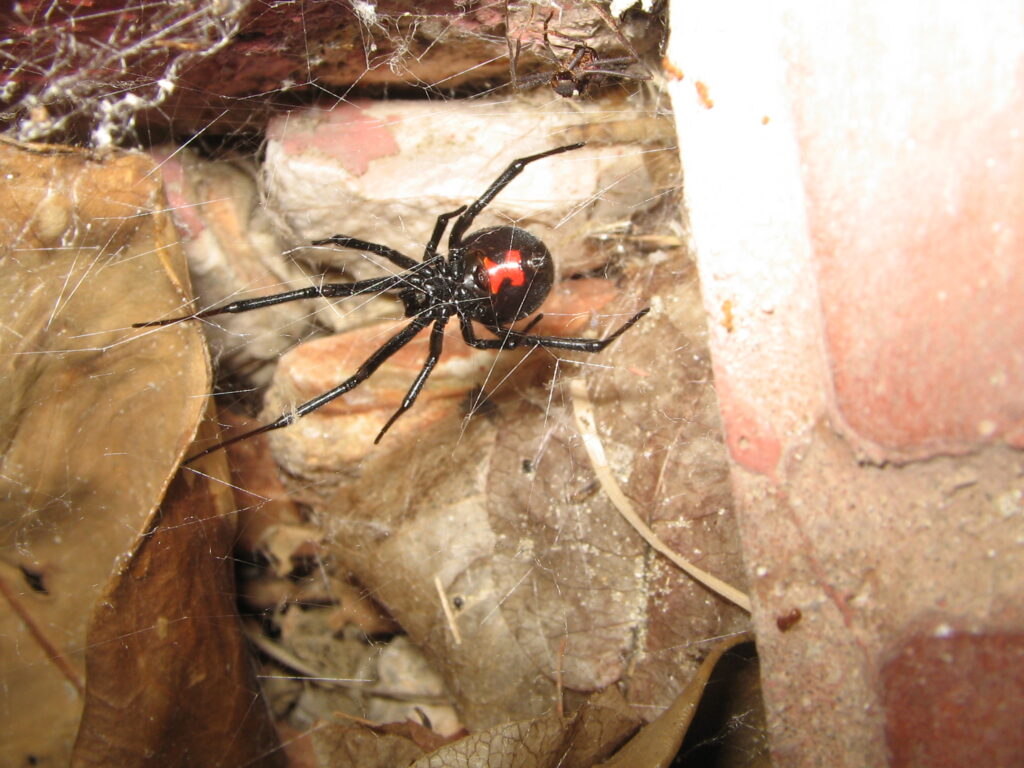
Photograph by Charaj
Like much of the southeastern United States, Georgia boasts a variety of spider species. In addition, some well-known types of spiders that do not occur naturally in the state have established populations in Georgia through human activities. Likewise, some species are not as prevalent in the state as commonly believed. For instance, the much feared brown recluse (Loxosceles reclusa) is often mistaken for other spiders like the southern house spider (Kukulcania hibernalis). Cases of brown recluse bite are rare in Georgia, and health care professionals sometimes misdiagnose Methicillin resistant Staphylococcus aureus (MRSA) infections as brown recluse bites.
Widow spiders are also venomous to humans. In Georgia, southern black widow (Latrodectus mactans), northern black widow (Latrodectus variolus), and brown widow (Latrodectus geometricus) spiders have been reported indoors and outdoors. These cobweb-producing spiders often seclude themselves in dark, isolated areas and inflict painful bites if threatened by physical contact. Widow spider bites require medical attention but are rarely fatal.
In Georgia, spider groups that lack venom harmful to most humans include cellar spiders (family Pholcidae), crab spiders (family Thomisidae), crevice spiders (family Filistatidae), funnel-web spiders (family Agelenidae), jumping spiders (family Salticidae), long-jawed orb weavers (family Tetragnathidae), lynx spiders (family Oxyopidae), ogre-faced spiders (family Deinopidae), orb-web spiders (family Araneidae), sheet-web weavers (family Linyphiidae), trapdoor spiders (family Cyclocosmia), and wolf spiders (family Lycosidae). Notably, the golden garden spider (Argiope aurantia), a member of the orb-web family, is frequently found around homes and gardens. This spider is large but poses no serious threat to humans. Another species of interest is the daddy-longlegs spider (Pholcus phalangioides), not to be confused with another organism with a similar name of “daddy-longlegs,” which belongs to another arachnid in the order Opiliones. Contrary to popular belief, neither daddy-longlegs spiders nor daddy-longlegs are venomous to humans.
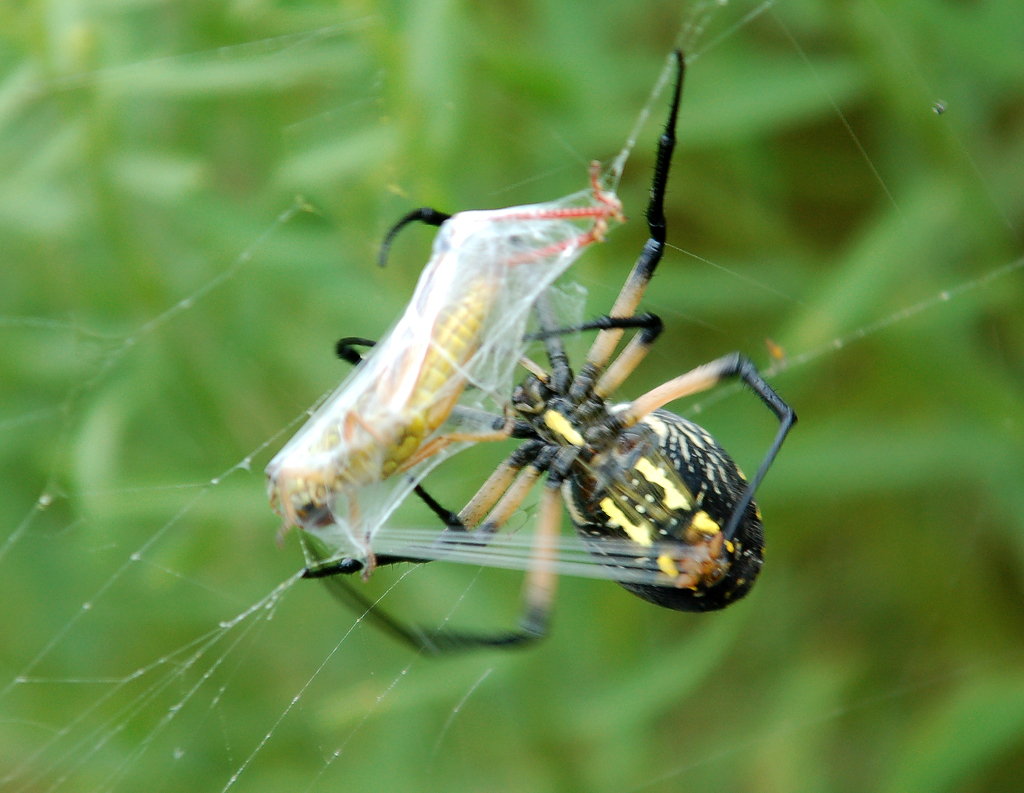
Photograph by Tom McC
Ecological Importance
Insects and spiders are excellent indicators of overall biodiversity in a given area. In Georgia, the presence of certain insects and spiders are considerations when planning agricultural and commercial projects. The two groups also contribute substantially to local food chains, both preying on and serving as prey for other animals. Scientists in various fields of research also study insect and spider products and chemicals, including venom and silk, for medical or agricultural developments.


